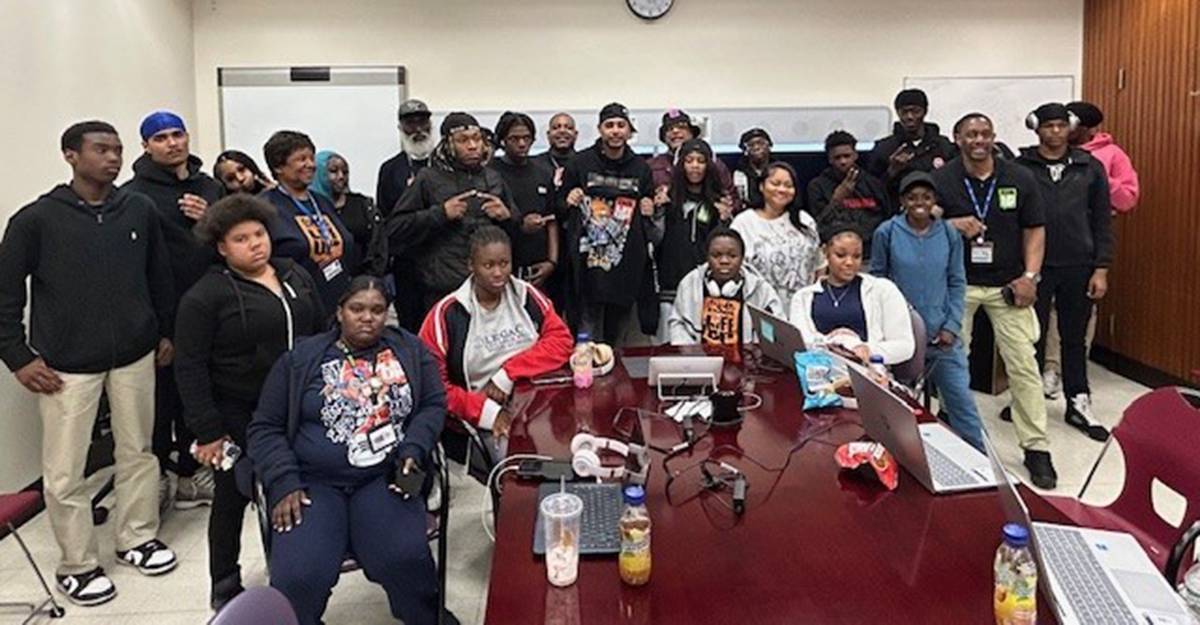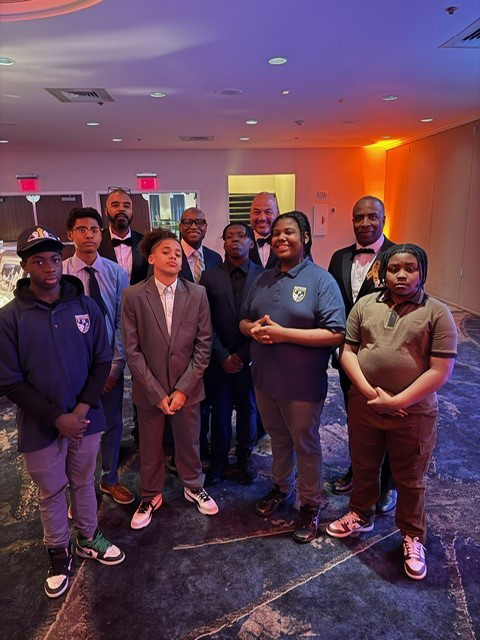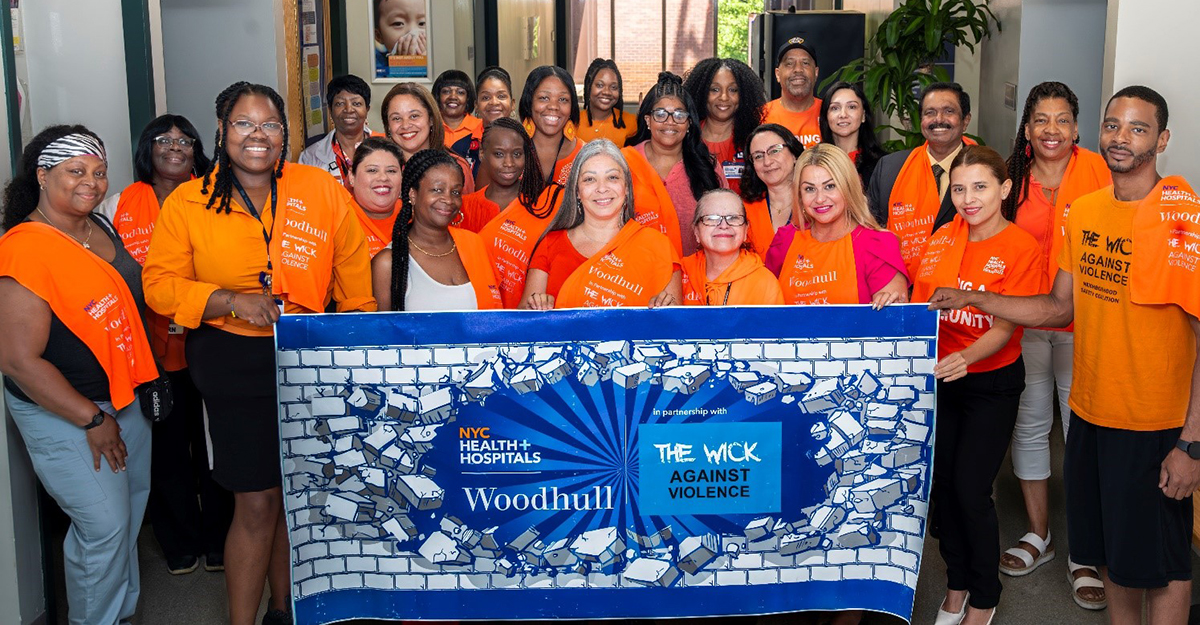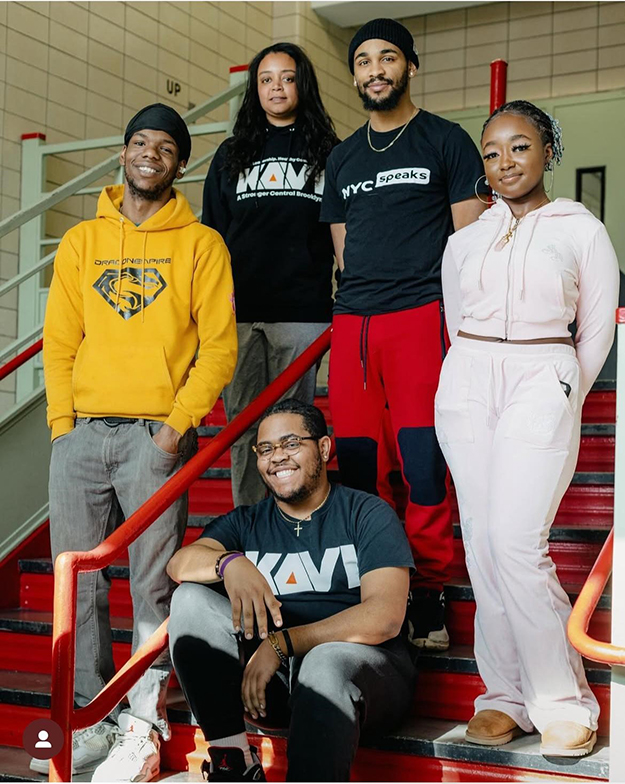NYC Health + Hospitals Announces Unification of Its Hospital-Based Violence Interruption Programs to Address the Gun Violence Public Health Crisis
HVIP programs utilize a three-pronged approach to treat victims of violence and ensure their lasting recovery: interruption, prevention, and community engagement Two-thirds of the approximately 3,500 patients treated annually for violent trauma at hospitals with HVIP programs receive interruption, prevention, and community engagement services In the coming year, NYC Health + Hospitals will lay the groundwork to establish HVIP programs at Bellevue and Elmhurst Hospitals
Jun 06, 2025

In recognition of Gun Violence Awareness Month, Wear Orange Day, and New Yorkers impacted by gun violence, NYC Health + Hospitals today announced that its Hospital-based Violence Interruption Programs (HVIP) have implemented a unified, multidisciplinary approach to treating victims of violent trauma. The public health system’s HVIP programming — funded in part by the NYC Mayor’s Office and the Dept. of Youth and Community Development (DYCD), and working in partnership with the Dept. of Health and Mental Hygiene (DOHMH) — utilizes a three-pronged approach to treat victims of violence at their bedside and ensure their lasting recovery. HVIP programs, which are currently established at NYC Health + Hospitals/Harlem, Jacobi, Kings County, Lincoln, and Woodhull, seek to break cycles of violence by providing interruption, prevention, and community engagement services that optimize outcomes for patients treated for violent trauma and foster lasting peace and healing in affected communities. Every year, the public health system’s five hospitals with HVIP programs treat over 3,500 patients for violent trauma, about two thirds of whom receive violence interruption, prevention, and community services by HVIP programs. In the coming year, NYC Health + Hospitals will lay the ground work to establish HVIP programming at Bellevue and Elmhurst Hospitals, expanding to all six of the public health system’s level-one trauma centers. In addition, in partnership with NYC Health + Hospitals Arts in Medicine Department’s Community Mural Project, this summer HVIP programs will begin creating a first-of-its-kind systemwide, collaborative mural with artists Sheena Vaughn and William Bentley to commemorate victims of gun violence and promote peace in impacted communities.
“Violence is more than a criminal justice issue — it is a public health crisis with a prescription that demands a coordinated, holistic public health response,” said NYC Health + Hospitals President and CEO Dr. Mitchell Katz. “By unifying our Hospital-Based Violence Interruption Programs, we are advancing a systemwide model of trauma-informed care that meets victims at their most vulnerable moments and supports them through long-term healing. This effort is about more than stopping violence — it’s about building healthier communities, restoring trust, and ensuring every New Yorker has the opportunity to recover, thrive, and live in safety.”
“By the time a young person picks up a gun, the system has failed them,” said NYC Department of Youth and Community Development (DYCD) Commissioner Keith Howard. “DYCD’s Office of Neighborhood Safety, in partnership with our Crisis Management System (CMS) partners, the Gun Violence Prevention Task Force, NYPD, NYC Health + Hospitals, and other sister agencies, are committed to preventing acts of gun violence in our communities by investing in preventative programs that help those young people at risk of being recruited by gangs stay on a positive path. Mayor Adams has led this city with historic investments and resources to reduce gun violence. DYCD joins all New Yorkers in shedding a spotlight on Gun Violence Awareness Day and Month. Today and every day, we continue to provide services to keep young people and communities safe and keep NYC the safest city to raise a family.”
“We have made it our mission to create a safer New York City where families affected by violence get the support they need, and where we save we provide the resources to cure gun violence in our communities once and for all,” said Jackie Rowe-Adams, President and Co-Founder of Harlem Mothers & Fathers S.A.V.E. “Since 2006, when we started right here in the halls of NYC Health + Hospitals/Harlem, and together with the NYC Health + Hospitals system, we’ve built a community-rooted, hospital-based response that brings hope and healing to families when they need it most. I’m proud of how far we’ve come, and I see the powerful impact of HVIPs growing every day across our city.”
“The patients our HVIPs treat for violent trauma are more than a statistic — they are someone’s child, sibling, or friend, and they all deserve the ongoing support they need to heal and prosper,” said Marlee Ickowicz, Systemwide Director, NYC Health + Hospitals Hospital-Based Violence Interruption Programs (HVIP). “With the unification and planned expansion of our HVIP programs, our goal is that, no matter which of our trauma centers treat you, you’ll find the same standard of care grounded in empathy, accountability, and community. Our work begins at the hospital bedside, but it extends deep into communities, where our heroic violence interruption and prevention teams walk hand-in-hand with survivors, families, and youth to break the cycle of violence and build lasting peace.”

NYC Health + Hospitals’ eleven hospital facilities, including its six level-one regional trauma centers, treated approximately 7,700 patients for violent injuries in FY 2024. Those patients include many of the approximately 66,000 children in New York City who live in zip codes with chronic exposure to gun violence, a public health epidemic that disproportionality impacts communities of color.
In April 2025, NYC Health + Hospitals and DYCD signed a universal memorandum of understanding for DYCD to fund HVIP programs through FY 2026. Over the last two years, the public health system has worked to unify its HVIP programming through regular meetings of HVIP leadership to share best practices, strengthen alignment, and coordinate outreach and programming across sites. In addition, NYC Health + Hospitals, working in partnership with DOHMH, has improved data reporting and opportunities for collaboration.
The city’s public health system recognizes that violence should be treated like any other communicable disease, and has developed its HVIP programming in order to diagnose and treat it. The three-pronged approach to treating violence — interruption, prevention, and community engagement — seeks to break cycles of violent trauma and provide victims and their communities the support they need for a lasting recovery.

Interruption begins at victims’ bedsides, during their most vulnerable moments and when they are often most receptive to change. Early interruption is critically important to breaking cycles of violence, preventing retaliatory violence by defusing conflicts and working towards mediation. The HVIP hospital teams are led by multi-disciplinary teams of physicians, nurses, social workers and violence interruption experts who provide a continuum of care to mediate conflicts, prevent retaliation, and reduce the risk of recidivism. This immediate support helps victims of violence and their loved ones find pathways to recovery and rehabilitation and connect to supportive services including Victim Crime Services, which support victim relocation and funerary services.
After providing immediate interruption, HVIP programs turn their focus to long-term, forward-looking prevention. HVIPs offer positive alternatives through hospital-community partnerships that provide youth opportunities to avoid problem behavior or violent incidents. These opportunities include school-based programming to strengthen youth skills and promote non-violent education, peer mentoring and after-school programming to connect youth to caring adults and activities, and year-round job and internship programs that prepare young people for and connect them to full-time employment.

Finally, HVIP programs ensure the communities they serve are engaged and mobilized to mediate conflicts and support at-risk youth. Through regular, grass roots outreach and the organization of community events, including vigils, marches, and health education workshops, in coordination with community stakeholders, HVIPs develop relationships with young people, foster community solidarity, and create positive, peaceful social norms.
HVIP programs currently operate at the following NYC Health + Hospitals facilities:
- NYC Health + Hospitals/Harlem, Harlem Crossroads
- NYC Health + Hospitals/Jacobi, Stand Up to Violence (SUV)
- NYC Health + Hospitals/Kings County, Kings Against Violence Initiative (KAVI)
- NYC Health + Hospitals/Lincoln, Guns Down Life Up (GDLU)
- NYC Health + Hospitals/Woodhull, WICK Against Violence Program (WICK)

“At Harlem Crossroads, we stand with the youth and families of the Harlem community, offering healing, hope, and a path forward during many people’s most trying times,” said NYC Health + Hospitals/Harlem Crossroads Director James Powell. “We honor lives lost to gun violence and remain committed to building a safer, more just future through our work in unity with our community partners and across the NYC Health + Hospitals’ HVIP network.”
“At SUV, our committed team of outreach workers, social workers, physicians, and allied health care professionals work within the hospital and our communities to change the narrative of community violence,” said NYC Health + Hospitals/Jacobi Stand Up to Violence (SUV) team. “Our work is proactive to help both those in front of and behind the gun. SUV team members believe that all members of our communities deserve to live in safe neighborhoods. At SUV we commemorate Gun Violence Awareness Month by remembering both those lost to gun violence, and all the good work being done in the hospital and community to keep our neighborhoods safe.”

“Every day at Kings County Hospital we witness both profound pain and remarkable healing,” said Yahsef Johnson, KAVI Hospital & Clinics Program Manager at NYC Health + Hospitals/Kings County. “Each person that enters our doors carries immeasurable worth, every story deserves to be heard, and every moment of intervention plants seeds of transformation. We honor those we’ve lost, we embrace those who are healing, and we commit ourselves to breaking the cycles that bring violence to our communities by addressing the underlying trauma of our participants. KAVI’s work is more than medical care — it is an act of love, a bridge to tomorrow, and a testament to our unwavering understanding that every person has the right to safety, dignity, and a future filled with possibility and endless potential.”
“Every young person we reach is a life redirected toward possibility and away from pain,” said James Dobbins, NYC Health + Hospitals HVIP Director of Community Initiatives and Executive Director of Guns Down Life Up at NYC Health + Hospitals/Lincoln. “Our work not only breaks cycles of violence it rebuilds trust, hope, and belonging in the communities we serve. We do this in memory of those we’ve lost, and with unwavering belief in a future where healing leads the way.”
“In times of heartbreak and hardship, HVIPs help those impacted come together to heal and bring hope to our communities,” said Jessica Arocho, Director of Community Affairs and Coordinator of Cure Violence at NYC Health + Hospitals/Woodhull. “At NYC Health + Hospitals, our doctors stand shoulder to shoulder with our community partners not just to treat wounds, but to prevent them — through compassion, connection, and care. Every act of violence is one too many, and together, we are building a future where safety is not a privilege, but a promise for all.”
As part of the city’s broader violence prevention strategy — including Mayor Eric Adams’ Blueprint for Community Safety, which invests $485 million into high-need communities — NYC Health + Hospitals is committed to ensuring that all its high-volume level-one trauma centers have HVIP programs. The public health system is currently working with the Dept. of Youth and Community Development to expand HVIP programs to Bellevue and Elmhurst Hospitals, which collectively treat approximately 2,800 violent trauma patients each year.
###
MEDIA CONTACT: Press Office
#094-25
About NYC Health + Hospitals
NYC Health + Hospitals is the largest municipal health care system in the nation serving more than a million New Yorkers annually in more than 70 patient care locations across the city’s five boroughs. A robust network of outpatient, neighborhood-based primary and specialty care centers anchors care coordination with the system’s trauma centers, nursing homes, post-acute care centers, home care agency, and MetroPlus health plan—all supported by 11 essential hospitals. Its diverse workforce of more than 43,000 employees is uniquely focused on empowering New Yorkers, without exception, to live the healthiest life possible. For more information, visit www.nychealthandhospitals.org and stay connected on Facebook, Twitter, Instagram and LinkedIn.
